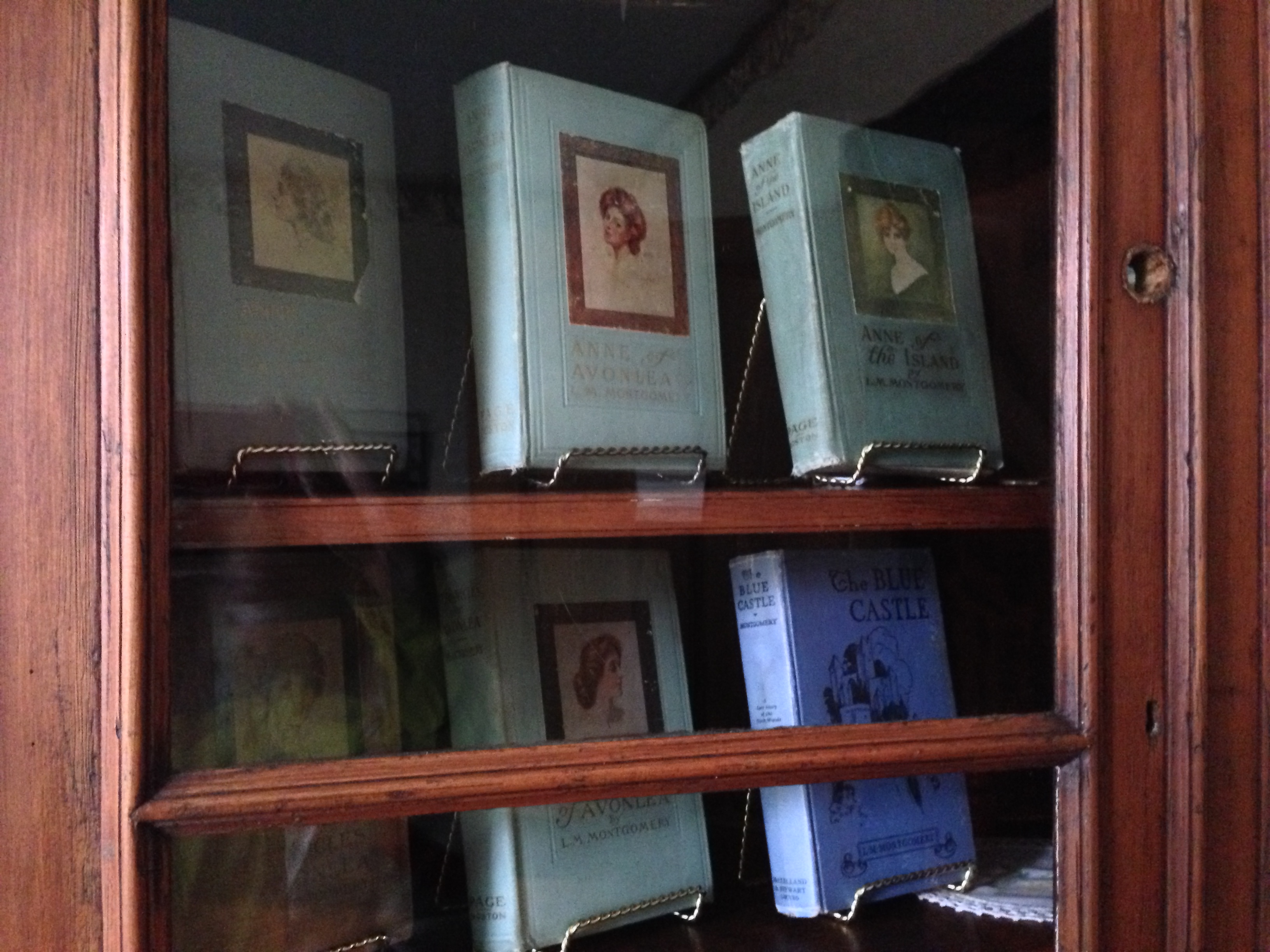
Newsletter
Yes! Send me my FREE short story collection and sign me up for those exclusive subscriber goodies!
We value your privacy, and will never spam you! View our privacy policy at lasmithwriter.com/privacy

Yes! Send me my FREE short story collection and sign me up for those exclusive subscriber goodies!
We value your privacy, and will never spam you! View our privacy policy at lasmithwriter.com/privacy
It’s getting down to the last two months of my Year of Important Books series, and it has been really hard to choose what my last two books would be. Well, to be honest, it’s been hard to pick this month’s book, as I have had the final one in mind pretty much all year. Stay tuned for that next month!
In the end I just couldn’t go through the year without re-reading one of my very favourites, Anne of Green Gables, by Lucy Maud Montgomery. This book, published in 1908, is about a young orphan girl who was mistakenly sent to live with a middle-aged brother and sister on Prince Edward Island who had originally wanted a boy. It has become a treasured classic with over 50 million books sold, many stage, movie and TV adaptations, and has been translated into twenty languages.
Lucy Maud Montgomery was born in Clifton, Prince Edward Island, Canada, in 1874, and was essentially orphaned herself as her mother died when she was an infant and her father, stricken by grief, sent her to live with her maternal grandparents in nearby Cavendish, PEI. He exited her life when he moved to Saskatchewan when Lucy was seven. She had a lonely childhood, and out of this loneliness she invented many childhood “imaginary friends” and developed the imagination that would later allow her to write not only the Anne stories but 20 novels, 530 short stories, 500 poems, and 30 essays.

L.M. Montgomery, in the 1920s. Picture from Wikipedia
Anne of Green Gables was written when L.M. Montgomery was already an established author. She had a hundred short stories published by 1907, and had been working as a teacher and as a proof reader for a couple of publications in Halifax. She returned to Cavendish to care for her ailing grandmother, and it was at this time that she began to write her novel about Anne, which was inspired by some notes she had made as a child about a young girl sent from an orphanage to a couple who had actually wanted a boy.

L. M. Montgomery used this picture of the famous model Evelyn Nesbit as her model for the face of Anne. Portrait by Rudolf Eickermeyer Jr, on Wikicommons
The book follows the adventures of Anne as she arrives in the fictional town of Avonlea and is met by Matthew Cuthbert, brother to Marilla, who has been sent to pick up their boy from the train station. Met with the spirited, talkative Anne, Matthew is unable to quench her enthusiasm about finally finding a home and decides to take her back to Green Gables to let Marilla break the news.
But Matthew’s heart is firmly captured by the young girl on that ride home and Marilla, although stern and prickly, soon follows suit. Anne is allowed to stay at Green Gables, much to her boundless delight.
It’s not hard to see why Matthew and Marilla were so quickly won over, because all of us quickly fall under this young girl’s spell. There’s just something about Anne, with her boundless optimism, dramatic personality, and love of beauty, that endears her to us right away. She is delighted by things that many of us miss entirely, or have forgotten to pay attention to: the blossoms on a tree, the beauty of a pond in the sun, the value of a good friend. Her vast “scope of imagination” opens up our own, and we see, again, the immeasurable beauty all around us in the simple things that we take for granted.
What is also so wonderful about this character is that Lucy Maud Montgomery did not allow her to be perfect. She has a fiery temper to match her (in her own mind) lamentable red hair, and this temper gets her into trouble more than once. She is a loyal friend, but also holds a grudge long past the time when she should have let it go. She can be vain, and silly, but these traits just endear her to us even more.
It’s not just Anne that we come to love in this book. The shy, recalcitrant Matthew and the practical, strict Marilla both act as contrasts to Anne’s sunny personality. Matthew becomes a “kindred spirit” to Anne right away, but it takes Marilla longer to warm up to this flighty, sensitive girl who has landed on her doorstep. But both of them come to life in different ways as Anne brings spunk and spirit to their every day lives at Green Gables. They had envisioned a boy to help out with the chores around the farm as they grew older, they ended up with a girl who knits them together into a family in ways they could not have imagined without her.
The setting for the book, Prince Edward Island, fits this story perfectly, for it gives Anne many opportunities to revel in its beauty. L. M. Montgomery obviously loved her island home, and it shows through Anne’s rapturous appreciation of the landscape.

Beautiful P.E.I
I had the privilege to go to P.E.I in 2013. It was near the end of October, so I didn’t see it in the middle of summer, but it truly was just as magical and gorgeous as I had expected. Many of the tourist spots were closed, including Green Gables, the farm owned by cousins of L. M. Montgomery, who brought it to life so vividly in the Anne books. But I did manage to get to the Anne of Green Gables Museum, the home of her aunt and uncle, where she spent many happy days in her childhood and where she was married, in the parlour, to Ewan MacDonald, a Presbyterian minister, in 1911. What a marvellous time I had there, seeing many artifacts from her life and imagining her there, looking out over the (real) Lake of Shining Waters.

Silver Bush, the home of L.M. Montgomery’s aunt and uncle, John and Annie Campbell, and now the Anne of Green Gables Museum

First editions of all of the Anne books and others, at the museum

This is as close as I got to Green Gables, more’s the pity. But I will be back!!
Unfortunately, from all accounts L. M. Montgomery’s life after her marriage was difficult, although she continued to write and publish for many years, often as an escape from the hardships she found herself in. The couple had three children, the second of which, a boy, was stillborn. Her husband suffered from some difficult health issues, including a major depressive disorder, and Lucy Maud herself battled depression as a result of caring for her husband. It’s easy to see how writing about Anne, the eternal optimist, could have been a boon to Montgomery in these years.
This book, and the ones that followed, are beloved by millions across the globe, and it’s easy to see why. I, for one, am glad to have made the acquaintance of a certain red-haired girl, who became a kindred spirit to me in an instant, and has stayed one for all these years.
*If you would like to read more about Lucy Maud Montgomery and the Anne books, I would highly recommend these blog posts over at The Rabbit Room by another Anne-lover, Lanier Ivestier:
The Craft and Courage of L.M. Montgomery, Pt. 1
The Craft and Courage of L.M. Montgomery, Pt. 2
The Craft and Courage of L.M. Montgomery, Pt. 3
Other posts in The Year of Important Books series:
Year Of Important Books: The Yearling
A Year of Important Books: Alice In Wonderland
Year of Important Books: The Wind in the Willows
Year of Important Books: Winnie-The-Pooh, by A. A. Milne
Year of Important Books: Watership Down, by Richard Adams
Year of Important Books: Little Women
Year of Important Books: A Study in Scarlet, by Sir Arthur Conan Doyle
Year of Important Books: If Only They Could Talk, by James Herriot
Year of Important Books: A Wrinkle in Time, by Madeleine L’Engle